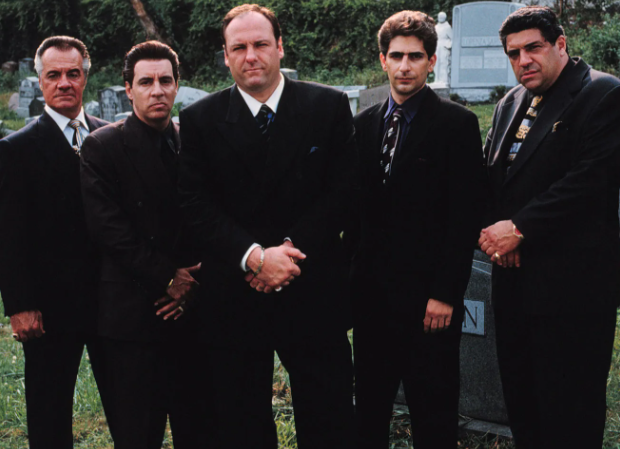
HBO’s The Sopranos won 21 Emmy Awards in its 6 seasons on air. Photo courtesy of Britannica.
Streaming technology feels omnipotent in the modern era of media, but it is still relatively young. The internet birthed the ability for users to illegally upload clips of their favorite shows and movies on websites such as YouTube, created in 2005. This medium began as a novelty, but the potential to expand how an audience can view media was clearly there. When Netflix switched from being a DVD-rental service to an online-streaming website, it set off a chain reaction that led to the establishment of its competitors, including Hulu and Amazon Video. Still, streaming was disregarded as the immature sibling to juggernaut broadcasting networks, like HBO, AMC and NBC, among others. Creative minds hesitated in attaching themselves to these online platforms for reasons of pride, financial support and marketing concerns. Instead, creative liberty is what brought in the dawn of the streaming apocalypse that has decimated network television for years now.
There are two main forms of television output, long-form and short-form. Short-form television is associated with shows that often reach a broader audience by way of its rapid pacing that doesn’t require prior episode viewings to comprehend. Series like
Friends
and
The Office
are audience-friendly, as are most sitcoms that dominate network television, because their dialogue and humor are often irreverent or particularly relevant to the episode at hand. In contrast, long-form shows (which are often double the length of short-form episodes) have the time to world-build and draw out storylines that do not need to be resolved instantly. HBO ushered in this style in the late-90s and early-21st-century with the production of hits like
The Sopranos
,
The Wire
and
Oz
. HBO was a premium cable network, which meant that consumers had to pay for its amenities, which is clearly a stark contrast from the accessibility of other broadcasting companies. This pay-wall also meant that content standards were less strict because their audience reach was considerably lower than free-to-watch television networks. This is what set the precedent for taboo topics to be explored in a similar format to how films handled them, which coincided with the growing interest of filmmakers to expand their stories through long-form television.
In 2013, Netflix became the first streaming service to have an originally-produced series win an Emmy. This was
House of Cards
, a show that opted for established figures in the film industry, rather than opting for television actors. David Fincher, director of
Fight Club
and
The Social Network
, spearheaded the show’s creation and employed Kevin Spacey and Robin Wright, who are both acclaimed actors. Netflix proved that success could be attained in-house; and this was further emphasized by the praise given to their following original series that included
Bloodline
and
Narcos
. Netflix’s competitors followed suit, albeit to a lesser degree of prosperity, but the impact was still felt across network television. As cable became increasingly expendable in the 2010s, networks had to respond by conforming to the times.
According to
The Seattle Times
, 418 of this year’s Emmy nominations stem from streaming services. 174 of these nominations were produced by Disney and HBO and distributed throughout their streaming services, Disney+ and HBO Max respectively. Network television has had to compromise with this new era of quantitative output, where their audience desires an extensive viewing experience that can compensate for the money they pay in subscription fees. As the shows get longer, the budgets get higher, and the creative forces behind these series become their own entity. This freedom has been reflected in shows like HBO’s
Euphoria
and
Succession
, Amazon’s
Invincible
, as well as Netflix’s
Stranger Things
. All of these examples are long-form shows that have cinematic budgets, casts and crews behind them and explore topics that would normally be forbidden on network television. A show like
Stranger Things
even blurs the lines of what is classified as television, as its most recent season consists of multiple episodes of feature-film length.
The hunger for more content has also spawned the popularity of limited-series, shows that often span a single season with a completed outline of episode quantity and story development. This relatively new streaming opportunity has enabled creators to indulge in their creativity, all while omitting the looming pressure of having the product be renewed for following seasons. HBO has been commanding this sector of television with their illustrious catalog that contains
True Detective
(an anthology),
Chernobyl
and
The Plot Against America
. The vastness of television’s subsidiary configurations has become undefined. This indeterminate perception of the art form has elicited unparalleled artistic expression that will surely permeate pop-culture for years to come.